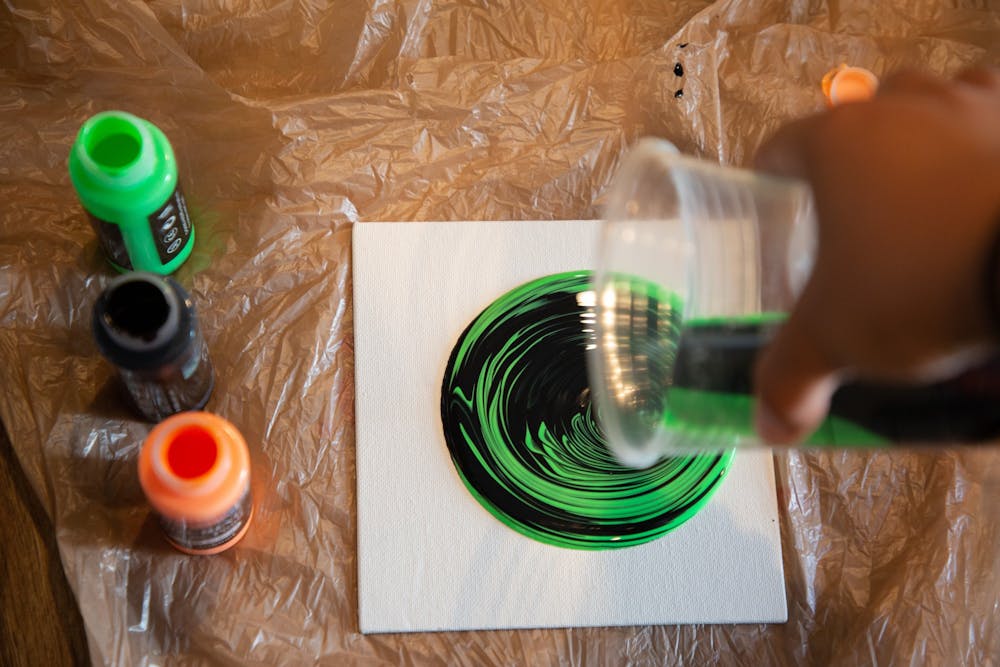Since March, an array of businesses, organizations and educational institutions have shifted their operations to a virtual format, and therapists have followed suit.
Speaking to a therapist via Zoom has its own pros and cons: The video conference session offers a sense of intimacy through face-to-face interaction that is lost during phone sessions, but there remains a furtive disconnect between patient and therapist simply due to the physical separation.
Out of this Zoom explosion, art and music therapists have developed new ways to engage with and treat patients to avoid in-person treatment.
Margaret Carlock-Russo, president of the American Art Therapy Association, said she has been working in the field of art therapy for over 25 years, initially inspired after learning about art therapy from a coworker at a nursing home.
"We've now built up a very good body of research that validates the efficacy of art therapy," said Carlock-Russo, who is also an associate faculty member and the coordinator for the expressive arts therapy program at Prescott College. "So that, combined with different things that have happened since COVID-19 … and (us having) to move to teletherapy, governments and insurance companies have relaxed their rules around service provision because there's such a need for mental health providers."
More art therapists have been working in the past several months, Carlock-Russo said, as more and more people recognize that artistic endeavors can act as an avenue for seeking psychological relief during the pandemic.
"What's beautiful about art therapy is the non-verbal component, and so you can utilize that creative process in expressing yourself through another means other than language," she said. "And that, for many people, is a key to beginning their therapy treatment."
Non-verbal therapy can act as a tool in materializing and processing a patient's woes or traumas before moving into "a more cognitive state," in which a patient can engage with verbal therapy with the guiding hand of art therapy, Carlock-Russo said.
"I really see art therapy becoming much more mainstream than it ever has been," she said. "And we've been on that trajectory slowly, but I feel like we're in a moment now where we're going to see a lot of growth, suddenly, over the next few years."
Carlock-Russo clarified that coloring books "could be therapeutic, could be relaxing to you, it's great for wellness, but it is not art therapy." In order to have impactful, structured art therapy, it is imperative that there is a relationship between patient and therapist, she said.
"We can work with anyone who would seek any other type of mental health service," Carlock-Russo said. "There are art therapists who work with addictions and recovery, there are art therapists who work in mental health institutions — whether it's in-patient, out-patient (or) crisis — we work in hospitals in medical situations … (and) we work a lot with PTSD, active military, veterans."
Akin to art therapy, the field of music therapy had its formal beginnings in the early 20th century and has been growing in prevalence and professional legitimacy over the past 100 years, said Sarah Hameline, a clinical assistant professor of music therapy at the Herberger Institute for Design and Arts.
"I think it's been interesting with the pandemic and that telehealth is now a valuable tool for music therapists," Hameline said. "Now we've opened up a great amount of access for music therapy for clients, which I think is really cool. It can often be a little difficult to find a music therapist or to get funding for music therapy, but I think telehealth is going to help push us forward into truly being part of the care team in a more powerful way."
Hameline, who also works as a music therapist at St. Luke’s Behavioral Health Center, gained an interest in music therapy at 16 when she attended New England Music Camp and encountered a music therapist working in the field. She said she went on to study music therapy as an undergraduate and graduate student.
One silver lining for the field of music therapy amid the pandemic is the vast increase of accessibility for prospective patients looking for treatment, Hameline said.
"Especially for people that have mobility issues, or if they have mental health that's inhibiting them from leaving their home, this is excellent, this is an excellent modality," Hameline said. "We work with vulnerable people, and I just think it eases the burden of having to make an appointment, go out, have somebody come to you. It's just easier."
Reach the reporter at stellefs@asu.edu and follow @samtellefson on Twitter.
Like The State Press on Facebook and follow @statepress on Twitter.
Sam Ellefson is the Editor of State Press Magazine, leading a team of writers, editors and designers in creating four print issues each semester. Sam is a senior getting dual degrees in journalism and film studies and is pursuing an accelerated master's in mass communication at ASU.




